
The Pros
- CarPlay and Android Auto
- USB-C ports
- n-car hotspot
The Cons
- Nav showing its age
- Native app support lacking
- Higher trims get more features
It’s been a while since Chevrolet overhauled its infotainment system, and version 3 continues with the same iterative progress.
GM has streamlined infotainment platforms across its various brands. They may not always look exactly the same, but they often follow the same user interface and design philosophy. Much of what Chevrolet has now was already in place with GMC, Cadillac and Buick.
I got to test drive the latest Infotainment 3 system in a 2019 Chevy Blazer RS, which also comes in three other trims, including True North, a Canadian exclusive. More of the differences between them relate to features under the hood, whereas the dash retains the same feature set throughout, save for some minor changes.
The cleaner look has an upside, particularly for drivers who may not always feel tech-savvy, but should GM have gone further and added more?
The basics
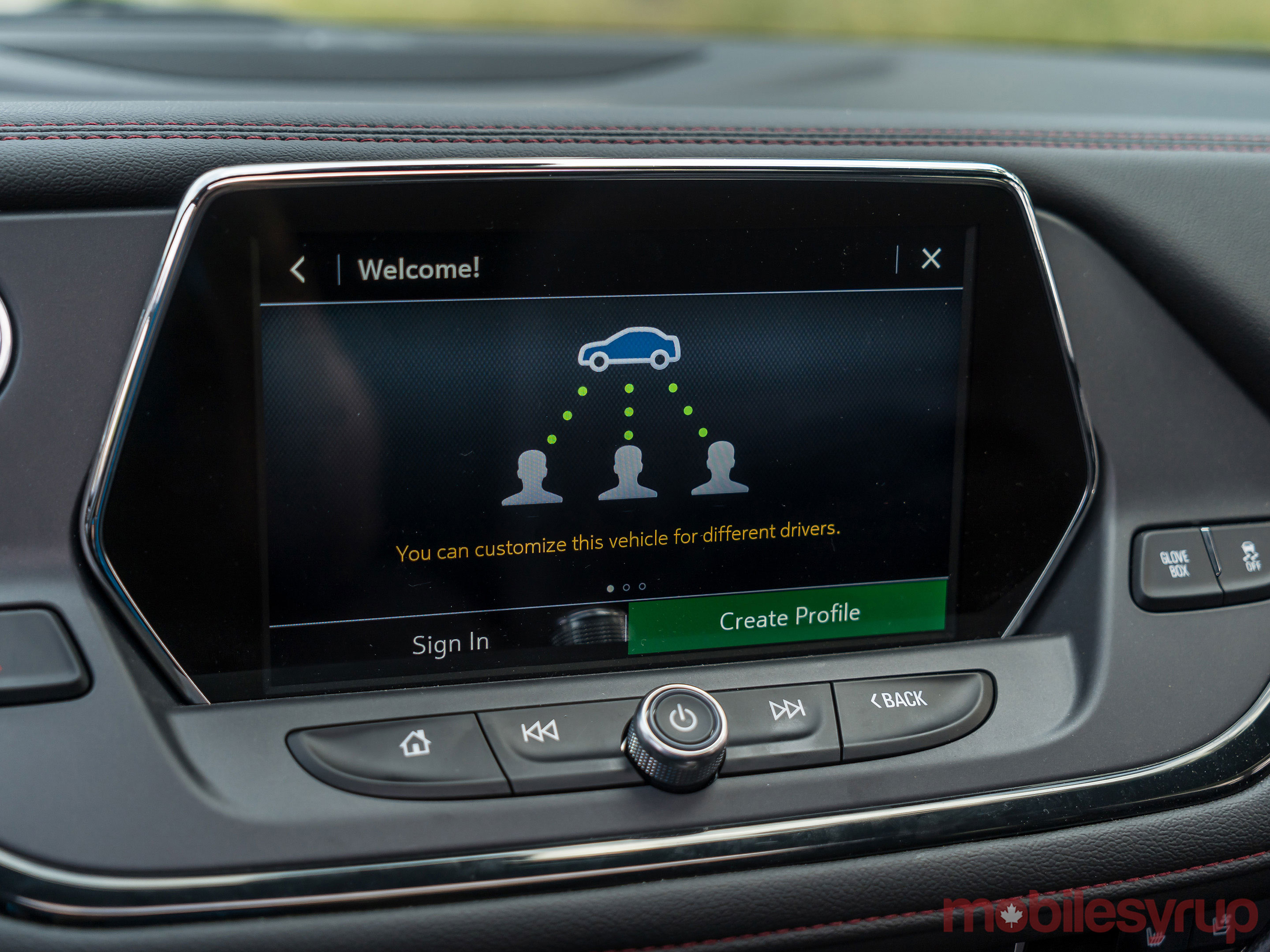
It had been a while since I tested anything related to Chevrolet, so the system inside, while familiar from other GM brands, was actually somewhat new in this case. Cadillac maintains its own unique look, which isn’t surprising as the luxury brand in the group.
With the Blazer, control is situated on the 8-inch touch display, plus a few key physical controls, like a volume dial, home button, track navigation and the standard voice buttons on the steering wheel.
For a while now, GM has been taking something of a hybrid approach. Offer in-house services, like those through OnStar, while also encouraging third-party usage via CarPlay and Android Auto. It’s a marriage that works fairly well, though I do wonder what else will come shortly.
Connections and layout
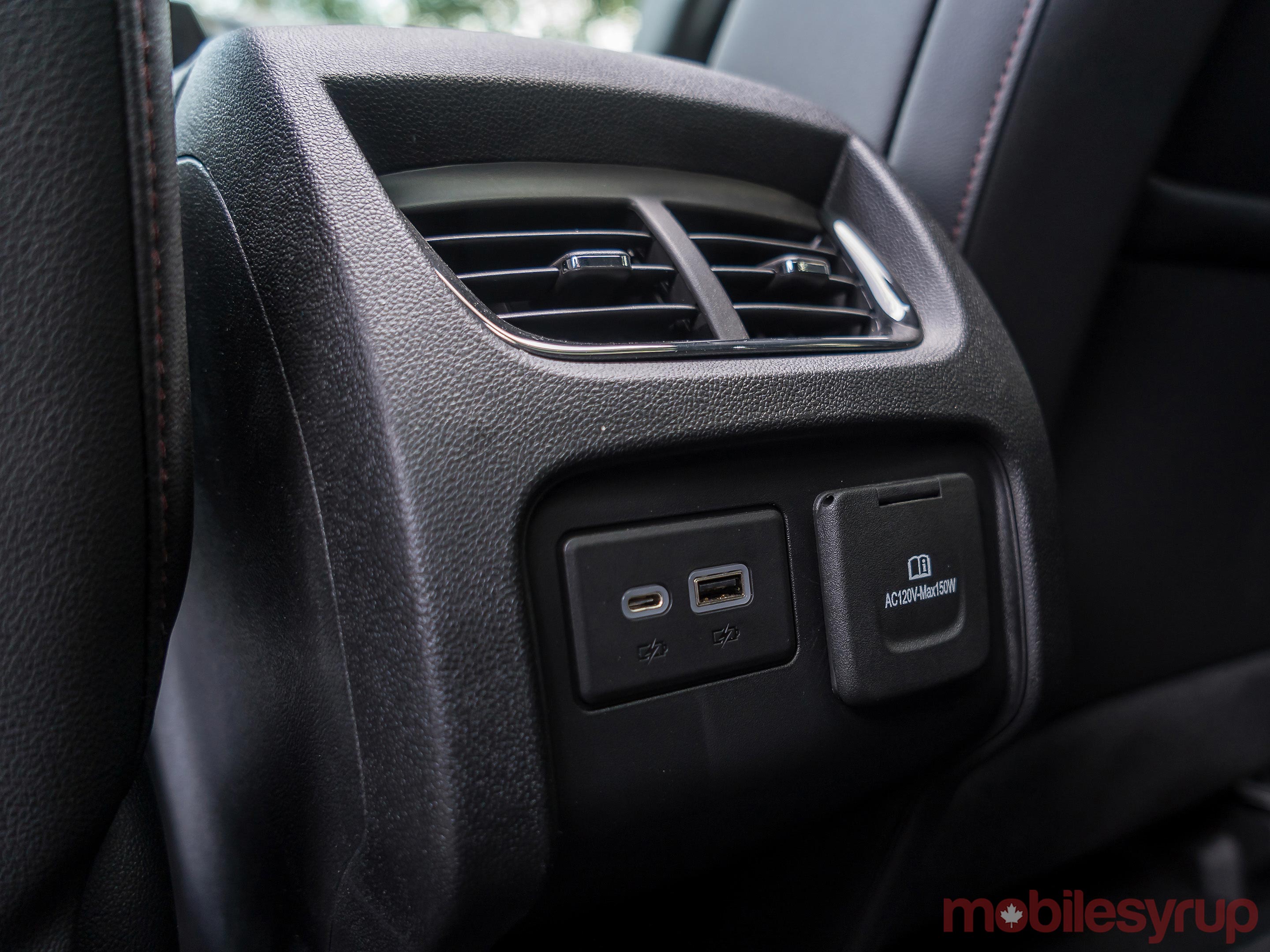
I already mentioned the 8-inch display, which appears to be of a higher resolution and quality than previous screens I’ve seen. Bright, vibrant and with good contrast, it made everything on it look pretty good. The UI could be a little more interesting, but keeping it simple isn’t a bad thing here.
As has increasingly been the case with other automakers, Chevy eliminated the Aux-In jack and brought in USB-C connections. And not just one, but rather three of them. The front under the dash features both a USB-A and USB-C port, and both can also be found inside the centre console storage, as well as on the back of the console facing the back seats.
The storage compartment also has a 12-volt socket, while the back also has a 120-volt adapter plug. For power consumption, this vehicle has plenty to offer. I found that only the front and centre plugs integrated with the infotainment system, so running anything off the phone to the dash required either of the ports there. Whether it was USB-A or USB-C, integration was the same.
Built-in Bluetooth supports multi-point connections, so you can pair two devices at once. Long pressing the voice button will access Siri Eyes Free for iPhones, along with Google Assistant for Android devices. Not all automakers offer the latter through Bluetooth, so that is a plus for the non-Apple crowd.

GM fixed an issue in a previous version whereby music would hesitate to playback again over Bluetooth audio whenever Google Assistant woke up. What used to happen was Assistant wouldn’t ping to notify drivers it was listening and waiting for a command. Even when you did talk to it, it would resume playing music on the phone first before sending it back to the car stereo. I didn’t encounter that this time.
The same in-car Wi-Fi hotspot is back, courtesy of the SIM inside the car. OnStar has a decent FAQ on the 4G LTE service, but hasn’t gone as far as white labelling it. To buy more data, you have to go through AT&T, who is the provider. Nothing has changed as far as pricing goes. The 20GB for $200 prepaid plan lasts for 12 months and is the best deal after doing the math. No matter what you go with, it will be expensive. The good news is you can roam across the border and not pay an additional dime in fees.
There is a wireless charging pad under the dash in front of the stick shift, adding yet another feature that is becoming standard for GM vehicles. However, it seems only the Premier and RS trims offer that as an option.
Navigation competition
The writing is on the wall for in-car navigation services. Automakers are trying to milk whatever last revenue they can from them, but the likes of Waze and Google Maps are fast making them obsolete.
That’s the case for urban dwellers at least. Rural drivers may appreciate the fact no data and a satellite connection keep them on track. The centre console has an SD card installed that stores all the map data. The slot doesn’t seem to do anything else otherwise.
HERE has long supplied those maps, and GMC vehicles integrated a cloud-based system that could present traffic, points of interest (POIs), fuel prices and more last year. You can only get all that through a Connected Navigation plan from OnStar. Connected Navigation also falls under OnStar’s Premium Access Plan that throws in 2GB of LTE data per month. You don’t need the data to use the maps; it’s just there as an incentive.
The nav system is standard on the Premier and RS trims, but not on the others. Under the circumstances, if you wanted Connected Navigation and its real-time traffic updates and services, you’d probably be using that instead of Waze or Google Maps. Otherwise, there’s not much point in spending the extra money.
CarPlay and Android Auto
These two platforms will soon lose some of their familiarity as they continue to evolve. Google’s new take on Android Auto looks very promising, and though I didn’t get a chance to try out the reimagined platform in this test drive, Blazer owners soon will.
Apple already unveiled a new CarPlay multifunction layout that will make the platform more like Android Auto. Google, meanwhile, has taken a somewhat opposite approach, maintaining the multifunction capabilities, but also adding in an app drawer that lays things out like a grid, a la CarPlay.
Both are in beta at the moment. At the time I was writing this review, Google had released the beta for the new Android Auto. I accessed it by opening the app on my phone, going to Settings and selecting “Try the new Android Auto.” Anyone currently trying the iOS 13 beta can also try out the new-look CarPlay.
That bodes well for drivers, regardless of which platform they prefer. There’s an interesting carry over from the GMC system that allows both platforms to run. Plug in an iPhone and Android phone simultaneously, and both icons will be live on the head unit’s display.
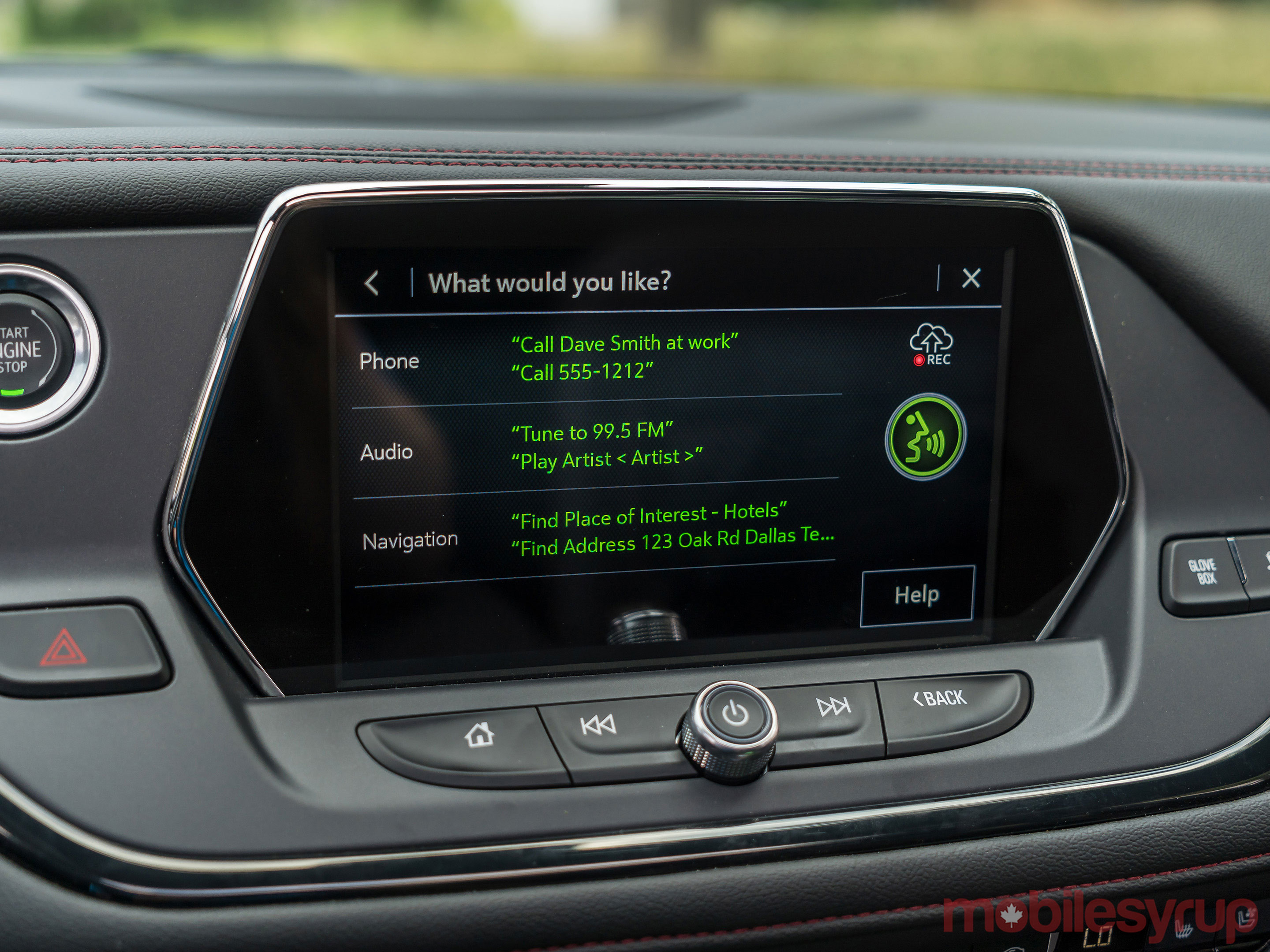
It’s not possible to run one app on one, and another on the other. For example, you couldn’t run Apple Maps on CarPlay and then Google Assistant on Android Auto. Once you’ve selected one of the platforms, only that one can run at any time. Select the other, and all active apps stop on the current one.
Chevy’s own voice recognition is always live with a quick button push on the steering wheel. Commands are basic, but for certain things, like map directions, phone calls and tuning to a radio station, it performs adequately. A long press will always pull up Siri or Google Assistant. I didn’t test this with Samsung’s Bixby, so I’m not certain that it would work, either via Bluetooth or USB.
Everything else
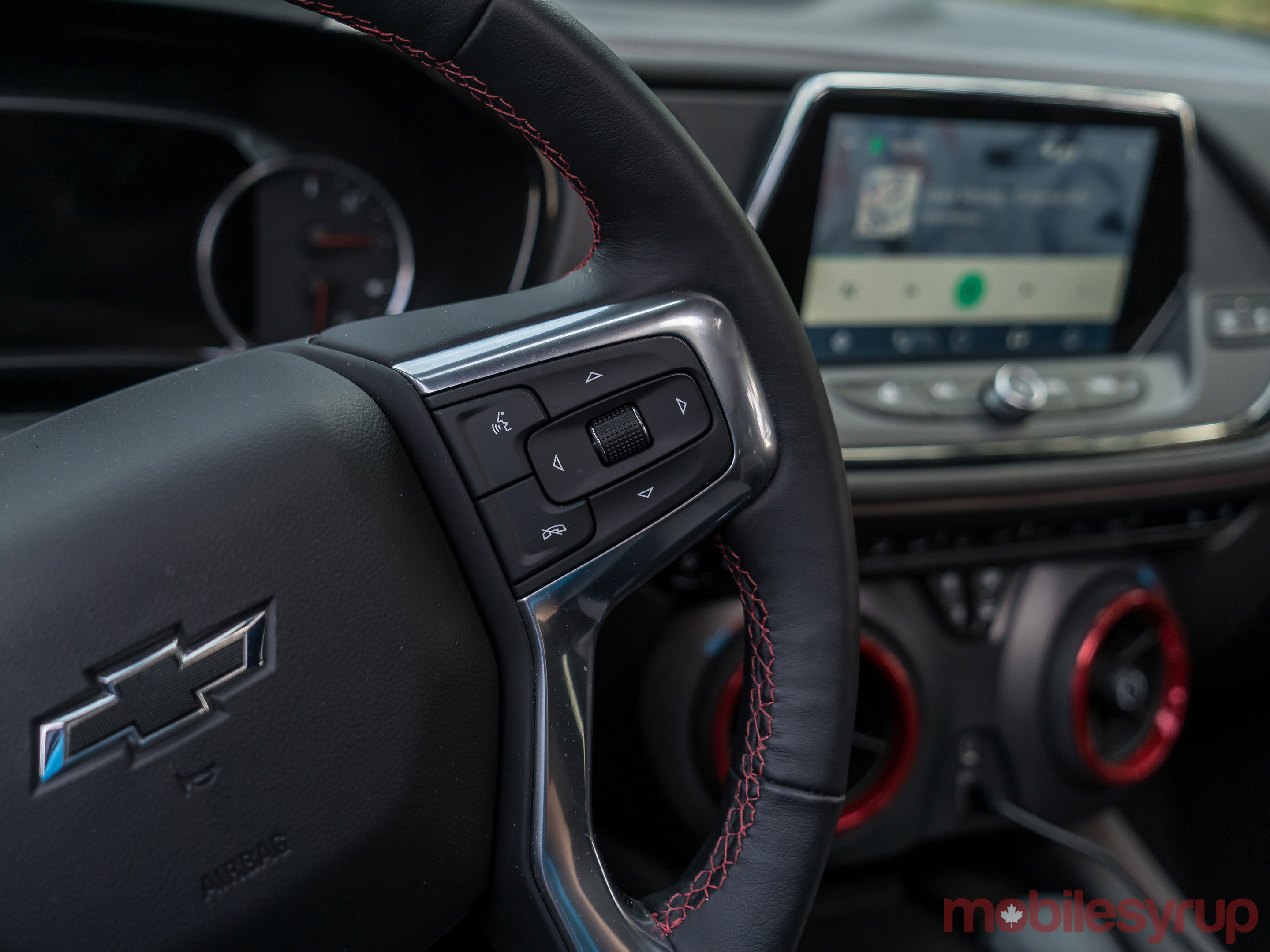
Little has changed as far as the pittance of apps available directly from the Infotainment 3 system itself. It’s still Glympse and The Weather Channel, like it was when I looked at it two years ago. Why GM doesn’t just scrap the app shop and integrate those two apps into the system is unclear to me. I know there are more apps available in the United States, but years later, the selection remains barebones in Canada.
Teen Driver is now standard on the system, so the feature originally introduced in the Chevy Malibu three years ago is a mainstay now. Helicopter parents looking for some accountability from their young drivers are probably enjoying that level of control.
Less talked about is Valet Mode, introduced five years ago starting with the Corvette, which locks down the infotainment system, among other things. If handing over the keys to someone (including your kids, I guess), you can input a four-digit PIN that locks the glove box, centre console storage, disables the Infotainment 3 system and records video from the onboard forward-facing camera.
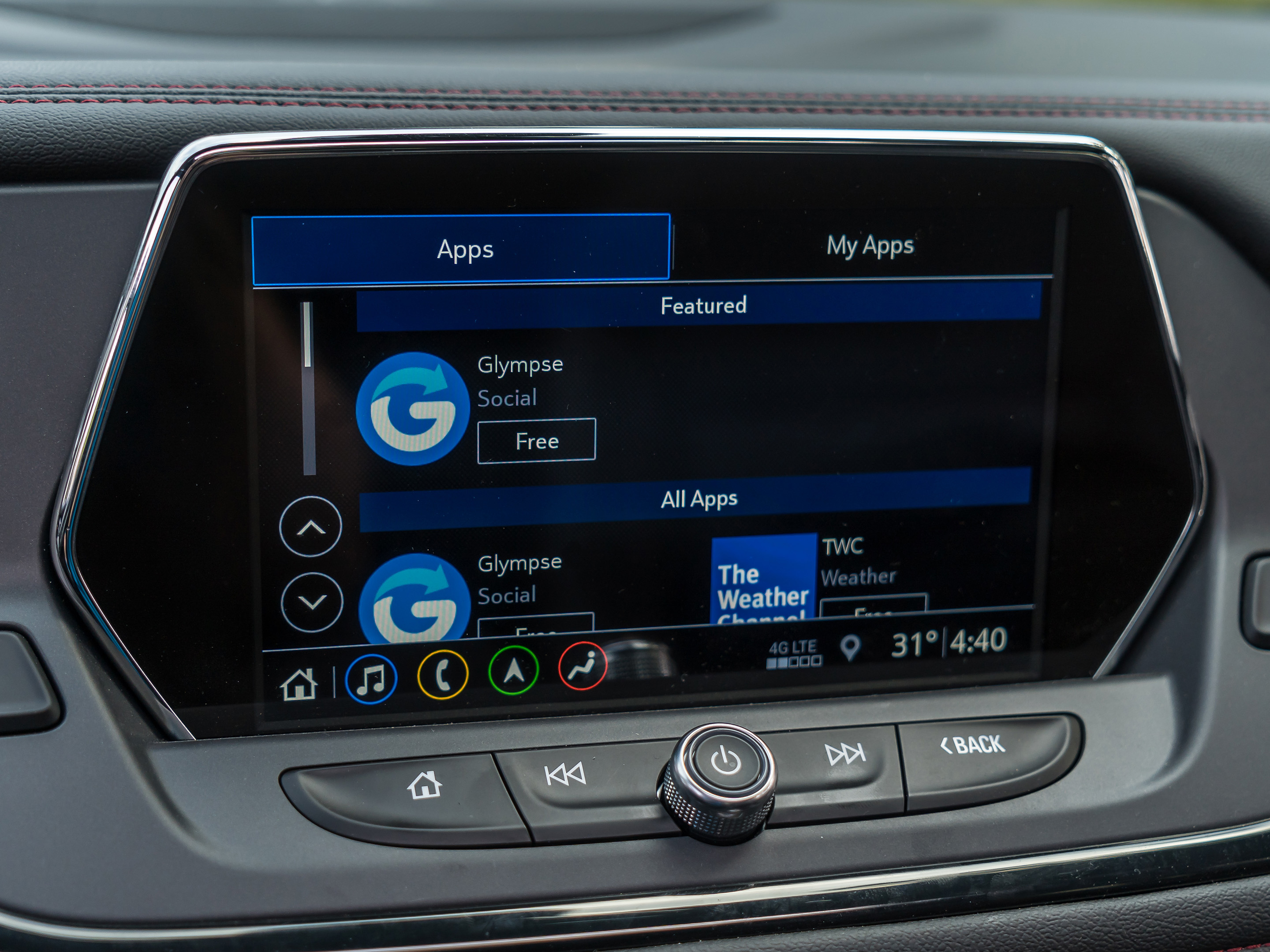
You probably wouldn’t use it much, if at all, but it’s now common in higher trim Chevy vehicles.
The myChevrolet app for iOS and Android works broadly with the Blazer trims, though I didn’t get a chance to test it out because there was no account I could access. It’s no different from the “my” apps for the other brands, like GMC, Buick and Cadillac. Save for a slightly different skin between them, features are the same.
They include remote start, remote lock/unlock, send to vehicle navigation and hotspot information. It can also show diagnostics for vehicle health, plus a map to show where you last parked.
Wrap up
Nothing was dramatically different with the Infotainment 3 system, and that was because I had already seen so much of it in the GMC Terrain last year. I don’t know that an overhaul was required at this point, only that it’s apparent Apple and Google will be doing the heavy lifting when it comes to what the smartphone does in the Blazer.
It’s a nice balance between what Chevy offers and what the other two bring in, so driving with a phone shouldn’t feel cumbersome. Data remains expensive, and eventually, Canadian carriers may finally start to add vehicles as additional devices on shared plans.
"I don’t know that an overhaul was required at this point, only that it’s apparent Apple and Google will be doing the heavy lifting when it comes to what the smartphone does in the Blazer."
MobileSyrup may earn a commission from purchases made via our links, which helps fund the journalism we provide free on our website. These links do not influence our editorial content. Support us here.



